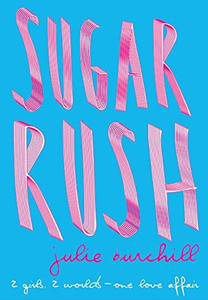By Kate Williams and Toby Smollett
What is it?
What is queer translation? The phrase consists of two terms that most of us are likely familiar with, yet put together they become much more difficult to comprehend. Queer translation does not refer only to the concept of translating queer stories and literature, but instead it marks a recent field of analysis which looks at the interplay of queer theory and translation studies.
With queer theory often seeking to look beyond existing binaries to find new ground, the field of translation studies greatly lends itself to being ‘queered’ with its mass of accepted binaries: source text vs. target text, source language vs. target language, etc. One of the lessons that any undergraduate student of translation will learn is that there is no such thing as a perfect translation. This is understood as a translation that results in a text with the exact same meaning as the source text – an invisible translation, as put by B. J. Epstein and Robert Gillett in the collection of essays they edited. Queering translation can not only help us to understand that the relationship between target and source text is an approximation rather than an equivalence; it can also help us view the source text as something less fixed than it appears. The source text is itself created via a sort of translation of various concepts and contexts, and so a translation requires the consideration and inclusion of all these parts.
How is it applied?
Having said that queer translation does not only refer to the translation of queer stories, such attempts can benefit from an approach of queer translation. In the book Queering Translation, Translating the Queer, Marc Démont separates the translation of queer stories into three subcategories. The first is a misrecognising approach, which effaces the presence of queer sexuality in the source text. The second is a minoritizing approach, which ignores the complex layers of a book in order to reduce it to a less interesting, more one-dimensional text on queer sexuality. The censorship of queerness in these two approaches to translated fiction suggests either that publishers are trying to “protect” readers from “inappropriate” language and themes in the source text, or that translators simply are not recognizing the complex layers of queer references in the works they are translating (very few queer translations are by queer translators). B.J. Epstein cites two examples, both translations from English to Swedish of young adult queer fiction which include this “censoring” of queer identities by softening or changing references to sex and sexuality. In Katarina Kuick’s translation of Aidan Chambers’ Dance on my Grave, subtle references to queerness are changed, for example “effete” becomes “decadent,” “hello-sailor clothes” becomes “sailor clothes” and “lazy bugger” becomes “lazy devil.” Similarly, polyamory, an important aspect of the character’s sexuality, is censored in Moa Andersdotter’s translation of Julie Burchill’s Sugar Rush, when she is caught having sex with one boy rather than four as in the original.
The third category proposed by Démont, however, is a queer translation which incorporates all of the queer layers of a story, including those which have perhaps been ignored beforehand by other translators, in order to maintain what he calls “the web of virtual connotative associations.” This new approach to translation not only offers us a tool to translate contemporary queer stories, but also provides us with novel readings of literary classics from across the ages as it becomes adopted by more and more translators. One such example as described by Holly Ranger, is Ali Smith’s 2007 novel, Girl Meets Boy, which Ranger cites as a queer translation of Iphis’ story from Ovid’s Metamorphoses. According to the Classical tale, Iphis is born female but raised male, and is eventually turned into a man by the Gods when he falls in love with Ianthe, allowing them to marry and have children. In Ali Smith’s interpretation, Iphis becomes Robin, a genderqueer activist, who falls in love with Anthea (representing Ianthe). Using a translation technique known as hijacking, originally developed for feminist translation by Louise von Flotow, Ali Smith’s voice as a translator/rewriter strongly intervenes in the work, allowing her to critique elements of the source text and to draw the reader’s attention to queer identities hidden within it. For example, Smith’s version tells the story through Ianthe’s perspective, a character who remains silent for most of the Ovidian tale. By subverting Iphis’ patriarchal male gaze and focusing on a female perspective, Ali Smith creates room to discuss Iphis’ androgyny and question Ianthe’s own sexuality; “Maybe… Ianthe wants a girl … Clearly Iphis is exactly the kind of boy - girl or girl - boy she loves.”
Why is it important?
So, queer translation theory helps us understand the role of the translator and raises questions on how queerness is represented in translation. It can both help us find inconsistencies in the representation of queer identities in translated fiction, as well as shine a light on hidden elements of queerness in literature.






